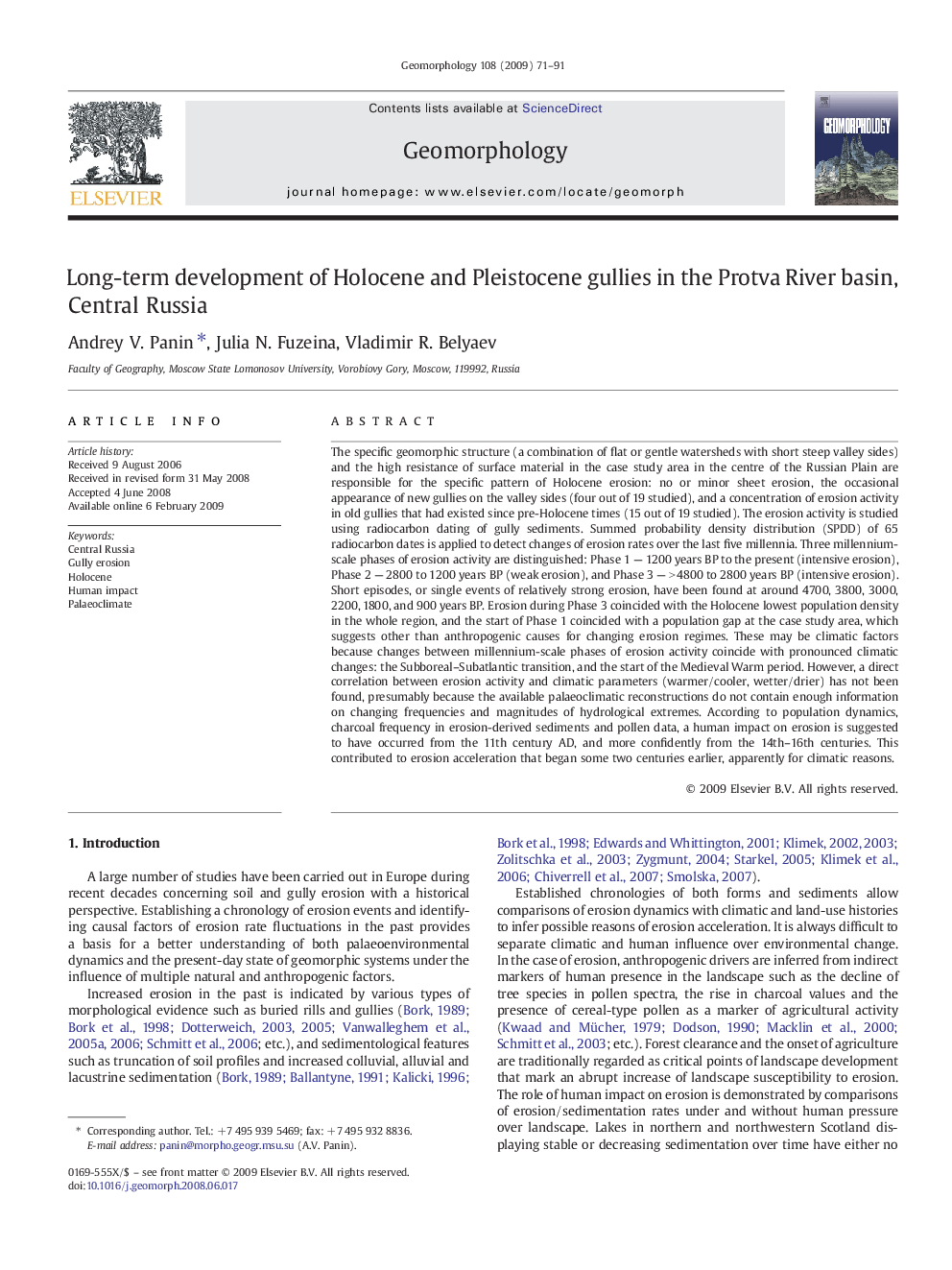| کد مقاله | کد نشریه | سال انتشار | مقاله انگلیسی | نسخه تمام متن |
|---|---|---|---|---|
| 4686432 | 1635542 | 2009 | 21 صفحه PDF | دانلود رایگان |

The specific geomorphic structure (a combination of flat or gentle watersheds with short steep valley sides) and the high resistance of surface material in the case study area in the centre of the Russian Plain are responsible for the specific pattern of Holocene erosion: no or minor sheet erosion, the occasional appearance of new gullies on the valley sides (four out of 19 studied), and a concentration of erosion activity in old gullies that had existed since pre-Holocene times (15 out of 19 studied). The erosion activity is studied using radiocarbon dating of gully sediments. Summed probability density distribution (SPDD) of 65 radiocarbon dates is applied to detect changes of erosion rates over the last five millennia. Three millennium-scale phases of erosion activity are distinguished: Phase 1 — 1200 years BP to the present (intensive erosion), Phase 2 — 2800 to 1200 years BP (weak erosion), and Phase 3 — > 4800 to 2800 years BP (intensive erosion). Short episodes, or single events of relatively strong erosion, have been found at around 4700, 3800, 3000, 2200, 1800, and 900 years BP. Erosion during Phase 3 coincided with the Holocene lowest population density in the whole region, and the start of Phase 1 coincided with a population gap at the case study area, which suggests other than anthropogenic causes for changing erosion regimes. These may be climatic factors because changes between millennium-scale phases of erosion activity coincide with pronounced climatic changes: the Subboreal–Subatlantic transition, and the start of the Medieval Warm period. However, a direct correlation between erosion activity and climatic parameters (warmer/cooler, wetter/drier) has not been found, presumably because the available palaeoclimatic reconstructions do not contain enough information on changing frequencies and magnitudes of hydrological extremes. According to population dynamics, charcoal frequency in erosion-derived sediments and pollen data, a human impact on erosion is suggested to have occurred from the 11th century AD, and more confidently from the 14th–16th centuries. This contributed to erosion acceleration that began some two centuries earlier, apparently for climatic reasons.
Journal: Geomorphology - Volume 108, Issues 1–2, 1 July 2009, Pages 71–91